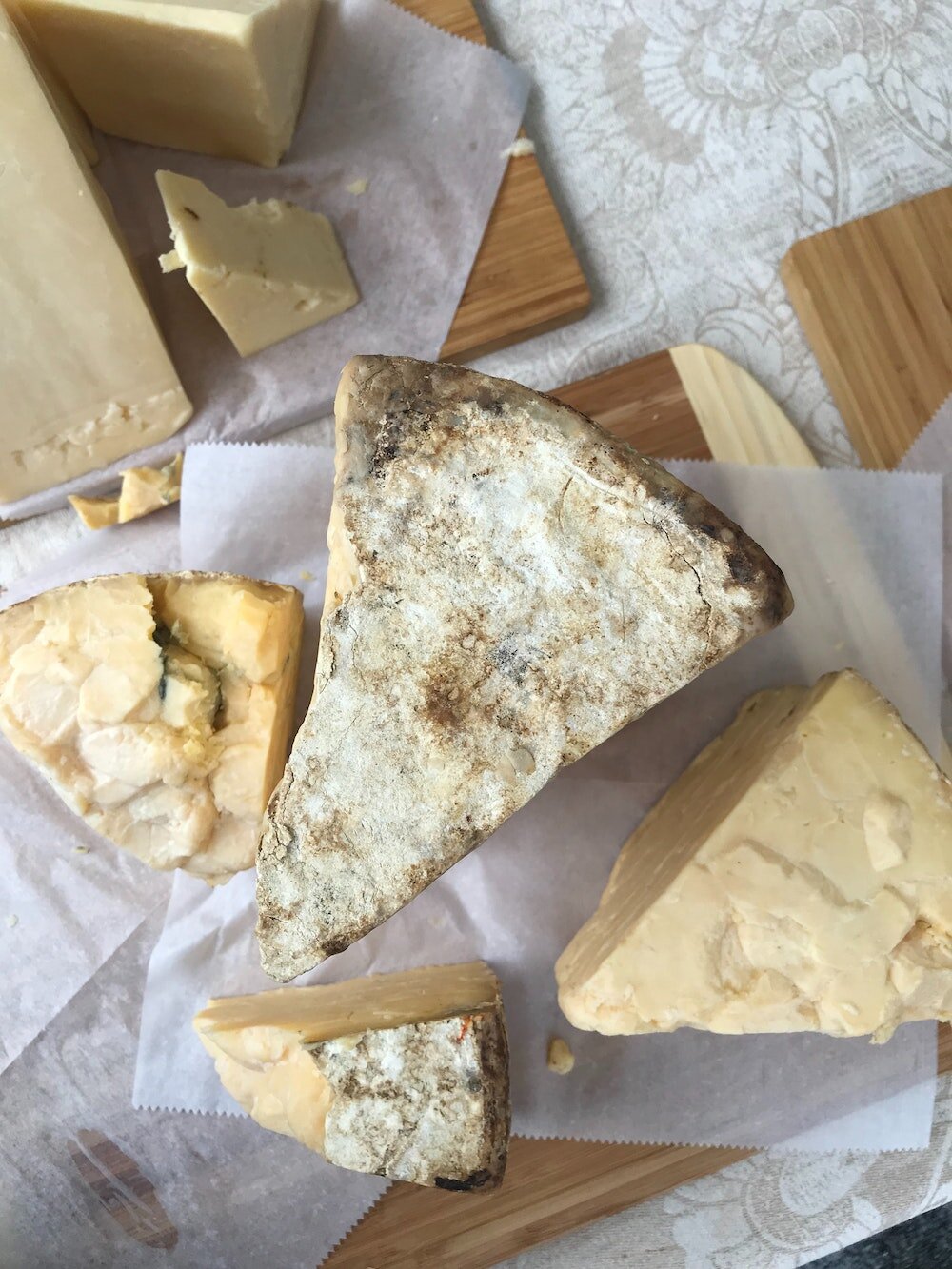Why I Eat Old Cheese (and Why You Should Too)
Editor’s note: Affine is the aging of cheese and affinage is the final ripening of cheese, but what about a cheese that is just plain old? We turned to Felice Thorpe, the President of the California Artisan Cheese Guild who shares her opinion on the topic of when it’s perfectly acceptable to eat old cheese instead of tossing it out.
Photo by Rebecca Orlov | Orlov Design Co on Unsplash
One of the best pieces of advice my mom gave me came well before I started a career in cheese. I was probably in kindergarten and she said, “Cut the mold off.” Cheddar cheese and saltines were our after-school munch and her culinary guidance mostly revolved around which moldy food was safe to eat. She was a healthcare worker so she wasn’t about to lead us astray. She sniffed the carton of milk with no expectations, just good intuition, common sense and clean hands.
Fast-forward to today and a peek into my barely functioning fridge deli drawer. Pieces of cheese, thumb-size to fist-size, are wrapped in a try, fail then try again method (Always remember there is a lot of bigger things to worry about than your cheese wrapping techniques). Inevitably, there will be lonely chunks with thousands of days on them. If that cheese type is firm and salty like a parmesan, cheddar, gouda or jack - that sucker is a survivor and deserves another chance. If that cheese is fresh or soft like brie, mozzarella or feta – it is time to throw it away and here’s why. Microorganisms thrive in wet environments and won’t penetrate firm salty cheese. Even if there is mold on the exterior of a firm cheese, it might taste yucky, but it won’t kill you. See how low my bar is for cheese consumption? Don’t make decisions based on fear. Know when to use common sense and when to say, “no thank you.”
"Robothon" by chrissam42 is licensed under CC BY-NC 2.0
Huge amounts of edible food is discarded daily in America. According to the USDA over 30% of the nation’s food supply is wasted every year. We must do better. The Food and Drug Administration (FDA) date labeling phrases add to the confusion:
“Best If Used By” date indicates when a product will be of best flavor or quality. It has nothing to do with food safety.
“Sell By” date tells the store how long to display the product for sale for inventory management. It is not a food safety date.
“Use By” date is the last date recommended for the use of the product while at peak quality. It is not a food safety date.
Expiration dates are applied by food manufacturers at their own discretion. The FDA supports the “Best if Used By” as a standard food safety phrase. Unfortunately, this leads to an estimated 20% of consumer food waste. Except for baby formula- there are no food safety requirements for date labeling. What does this mean for you? Try to be sensible when it comes to food spoilage. It’s somewhat telling that the FDA guidelines to maintaining food safety do not include cheese. Look- is it discolored? Smell- does it smell “off”? Feel- does it feel too mushy? Be aware of how much food you are throwing away. Act like you are a struggling college student and that every morsel counts. Check the fridge before you head out to the grocery store…and use up those old pieces of cheese.
"paneer, cubed" by chotda is licensed under CC BY-NC-ND 2.0
A portion of cheese is one ounce, when cubed, that looks like two dice. Chunk off two dice from your old cheese, add a handful of crackers, apple, nuts, congratulations! You just made a successful lunch. There is no “best” cheese when it comes to aging. I tend to prefer artisanal cheeses because they use less preservatives and I can taste the difference in quality, but a grocery store block cheddar is my grilled cheese go-to.
My friend, Ray Rumiano of Rumiano Cheese gave me a dry jack that he had accidentally aged for 4 years. Ray said, “It was kind of a fluke, it got lost in the shuffle.” It is hard to define a cheese like this. It travelled around the block and farther from a cellar, to a truck, to a fridge...it took years. This cheese allowed time and life to develop, it did not happen overnight. Important things take time, like relationships, work and learning the drums. This cheese persevered. It had flavors of roasted almonds, chicory and leather. It was tasty.
The oldest (edible) cheese in the world was a 40-year old cheddar from Wisconsin made by cheesemaker Ed Zahn. Apparently, the sharpness could only be consumed in small doses. This cheese was made while Nixon was President and it was sold in one-ounce pieces. That is some old milk!
Photo by angela pham on Unsplash
Resourceful people see opportunity in everything. They push boundaries. Stockpile cheese scraps like a hazelnut hoarding chipmunk, then sit back and let it age. Shred up the pieces in 4 months or 4 years and jump in fearlessly to the ultimate fettuccini alfredo or grilled cheese or fondue dinner.




